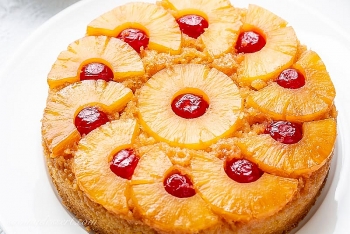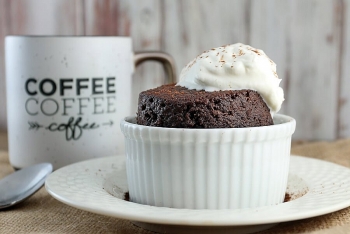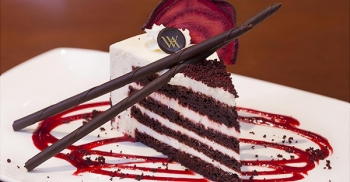How to Make Chinese Mooncake (Yue Bing) - Traditional Version
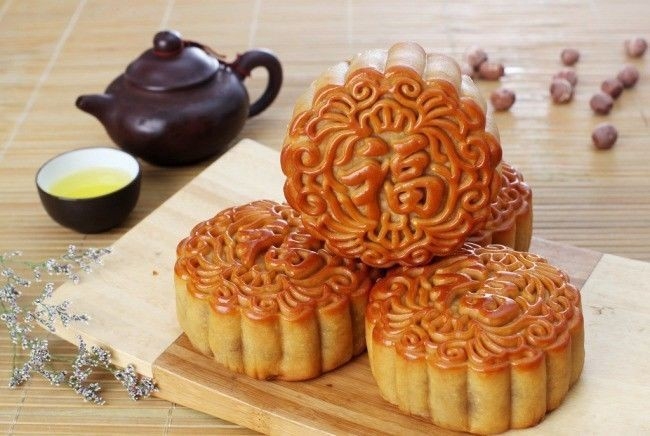 |
| Mooncakes symbolize family reunion. Photo: Medium |
In ancient times, mooncakes were a kind of offering to the moon. Over the centuries, these special cakes have become the most popular food of the Mid-Autumn Festival. They are named after the moon goddess (Chang'e), who is said to make this kind of cake.
Mooncakes are Round or Square Stuffed Pastries
Mooncakes typically measure around 5 to 10 cm (2 to 4 inches) across and up to 5 cm (2 inches) deep. Most mooncakes have pastry skin enveloping a sweet, dense filling, according to Chinese Highlights.
Mooncakes are usually eaten in small wedges during the festival, and shared by family members. They are generally served with Chinese tea, and, very rarely, mooncakes are served steamed or fried.
Making mooncakes does require some skill, and tedious if you start from scratch. Therefore, this mooncake recipe is about how to make the traditional Cantonese style mooncakes by using the ready-made filling, with simplified steps to save time.
A few tips before starting your mooncakes, notes China Sichuan Food:
 |
| Photo: Halicopter Away |
You need a kitchen scale to measure all the ingredients, accurate amount really matters to the final texture and taste.
Success mooncakes=well balanced taste+well wrapped fillings+well kept shape (including the clear pattern on the surface)
If you are using homemade paste filling, make sure your paste is dry enough. Moist fillings might cause cracks on the skin.
Cover all the fillings and divided wrapper dough with a plastic wrapper to prevent drying out.
Do not use too much flour to dust, otherwise, it influences the pattern.
Mooncake assembling needs patience and skill. Wearing plastic gloves can make the process easier. But be gentle and slow down when pushing the wrapper up.
***Read more: TOP 10 Best Delicious Traditional Cakes Around the World!
So let’s get started!
Ingredients
Wrapper dough:
115 g plain flour
28 g peanut oil, around 2 tablespoons, or other vegetable oil
1 tablespoon flour for coating the tool
75 g golden syrup homemade or store-bought
2 g lye water
Filling:
8 salted egg yolks, each 10g
380 g bean paste or black sesame filling, 25g*8+30g*6
Egg wash:
1 egg yolk
1 tablespoon egg white
Instructions
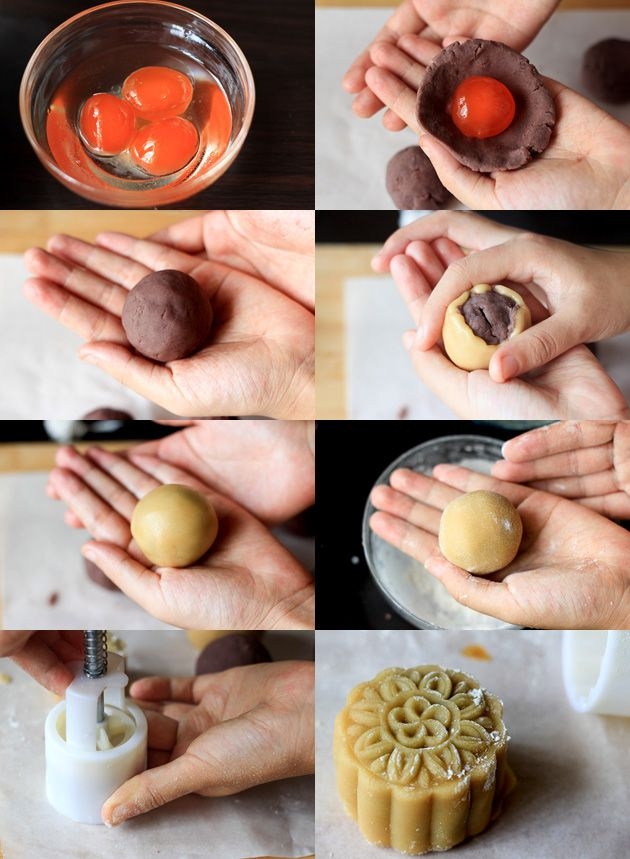 |
| Photo: Pinterest |
Prepare the filling paste in the previously, lotus seed paste, mung bean paste or red bean paste.
To make the wrapper
Combine lye water, golden syrup, and vegetable oil in a small bowl and then mix with flour. Stir until well combined. Wrap with plastic wrapper and then knead several times until smooth. Set aside in the fridge for 2-3 hours.
Transfer out and then divide into 14 equal balls (each one 15g)
Assembling
Measure the fillings for egg yolk mooncake: paste+ egg yolk=35g. Measure the fillings for pure paste filling: paste filling=30g. Wrap the egg yolks with paste firstly. And shape all the filling into round balls. Take one portion of the wrapper, press into a round wrapper and then place one filling ball in the center. Push the wrapper from bottom to top little by little until the whole ball is completely sealed. Shape it into a round ball firstly and then into an oval. Slightly dust your mooncake tool and press the rod and gently remove the cake from the tool.
Preheat oven to 180C (356F). Spray a very thin layer of water on the surface to avoid cracking the surface (especially you used a larger amount of dusting flour). Bake for 5 minutes.
In a small bowl, whisk the egg yolk and combine it with egg whites. Transfer mooncakes out and brush a very thin layer of egg wash on the surface.
Continue bake for around 15 to 20 minutes until the mooncake becomes well browned.
Transfer out to a cooling down crack to cool down completely. Place in an airtight container. Wait for around 1 or 2 days for the pasty to become soft and oily. After the "oil return" process, keep the mooncakes in the fridge for up to 2 weeks.
| Cook’s Note Golden syrup is an amber-colored syrup made from sugar with a much richer texture and deeper aroma than simple syrup. It also contains acid, which helps make the mooncake pastry tender. Alkaline water -- also known as kansui, or jian sui in Chinese -- is an alkaline solution made from sodium carbonate and potassium carbonate. It is often used in Asian pastries and ramen noodles. It acts a bit like baking soda, keeping dough fluffy and moist without introducing too much gas. It also adds a yellow color to the dough (like making egg noodles without egg). In mooncakes, alkaline water neutralizes the acid in the golden syrup, so the dough doesn't taste sour, Food Network cites. |
Overpriced Mooncakes
It has also become a fad to purchase mooncake as a gift among relatives, friends, and business associates to celebrate the Mid-Autumn Festival.
As a result, the price of mooncakes has escalated every year due to high demand. The selling price is many folds compared to the cost of the ingredients. Therefore, I thought this is close to absurdity and trigger me to I should develop a simple recipe that everyone can follow to make it at home.
Besides, since mooncake has become too commercial today, so if you are using your homemade mooncake as a gift, they will value your sincerity, hard work, and effort.
|
This classic cake forever remains a favorite dessert for all generations. What are you waiting for? Check the information given below and start making one ... |
|
A chocolate mug cake recipe is one of those super simple desserts that everyone needs to have in their back pocket just in case a ... |
|
Red velvet cakes are the perfect dessert for pretty much any occasion you can think of. Let's follow the instructions of making a red velvet ... |

